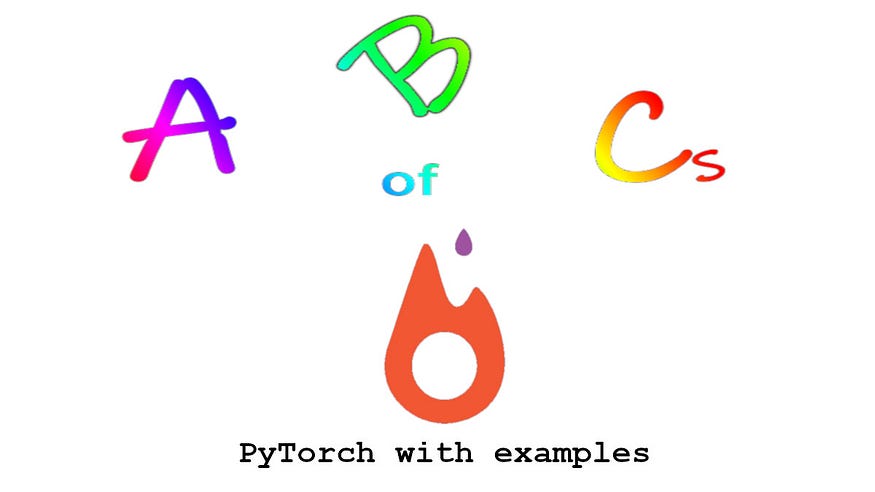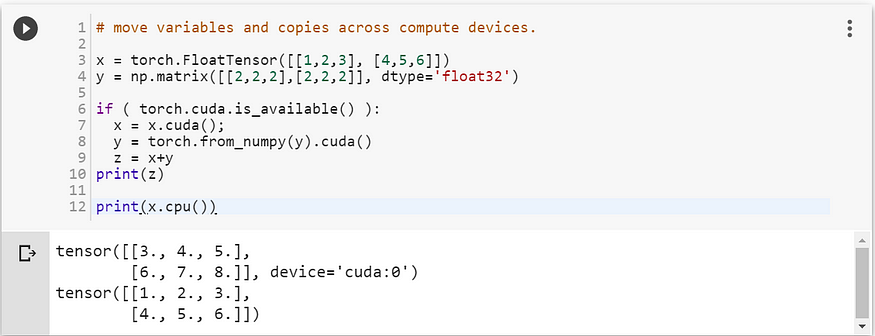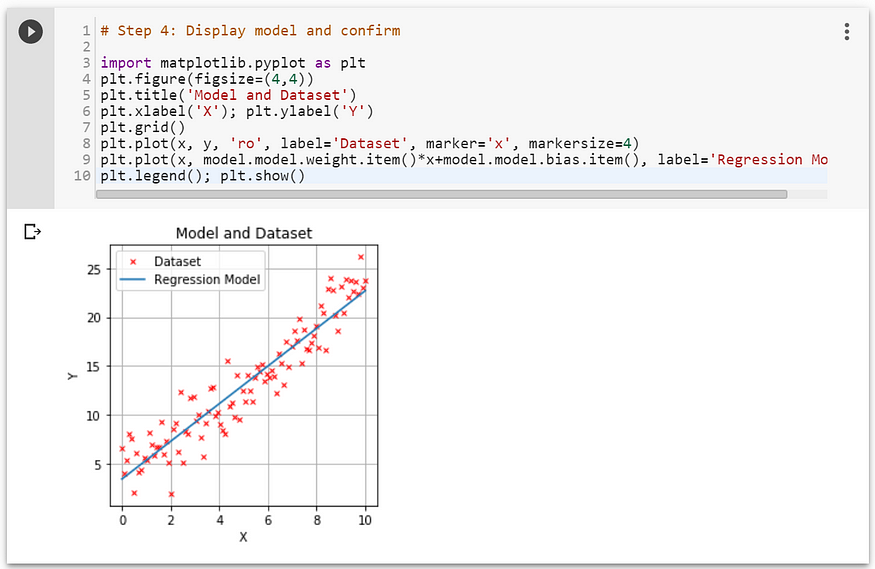
The ABCs of PyTorch in 4 Minutes
Last Updated on July 20, 2023 by Editorial Team
Author(s): Rohit Sharma
Originally published on Towards AI.
PyTorch 101 U+007C Towards AI
Introducing the basics of PyTorch in four minutes, with sample code

This article helps newbies to get started with python PyTorch in 2 minutes with code written in python. For those who don’t know what PyTorch is, it is an open source deep learning platform from Facebook that provides a seamless path from research prototyping to production deployment.
Without further ado, let’s dive right in.
Tensors
It is is a multi-dimensional matrix containing elements of a single data type, that is declared as

Operations
PyTorch contains many mathematical operations over tensors. Additionally, it provides many utilities for efficient serializing of Tensors and arbitrary types and other useful utilities. Here is an example of the addition/subtraction of tensors.

PyTorch and NumPy
One can easily go back and forth between PyTorch and NumPy. Here is a simple example of converting np.matrix to PyTorch and changing the dimension to a single column

Here is a useful GitHub repo outlining PyTorch<->numpy conversions.
CPU and GPUs
PuTorch allows your variables to change devices on the fly with a torch.cuda.device context manager. Here is the sample code:

PyTorch Variables
A Variable nothing but a thin layer that wrapped around Tensor. It supports almost all the APIs defined by a Tensor. Variable is cleverly defined as part of the autograded package. It provides classes and functions implementing automatic differentiation of arbitrary scalar-valued functions.
Here is a simple example of PyTorch variable usage:

Back Propagation
The backpropagation algorithm is used to compute the gradients of the loss with respect to the input weights and biases to update the weights in the next iteration of optimization and eventually reduce the loss. PyTorch is smart in hierarchically defining a backward method on Variables to perform backpropagation.
Here is a simple example of backpropagation to compute differential with an example of sin(x)

SLR: Simple Linear Regression
Now we’ve collected all the ammunition to get started on machine learning examples with simple linear regression problems. We’ll do that in 4 easy steps:
SLR: Step 1
In step 1, we create an artificial dataset created from an equation y=w.x+b with random error injected. See the example below:

SLR: Step 2
In step 2, we define a simple Class LinearRegressionModel with a method forward and constructor using torch.nn.Linear to a linear transformation to the incoming data

SLR: Step 3
The next step is training the model with MSELossas cost function and SGD as the optimizer.

SLR: Step 4
Now that training is done, let’s inspect our model visually.

There is a lot to learn, so get started with the python notebook with the code presented here. Feel free to change and start playing with PyTorch.
PyTorch_Overview
Link to entire notebook with sample code used in this article …
cainvas.ai-tech.systems
Have fun. U+1F44D
References:
- Explainer Video — https://youtu.be/drwrMiARTQ4
- Notebook URL — https://cainvas.ai-tech.systems/notebooks/details/?path=rohit/Scholar%20Modules/M4%20Frameworks/PyTorch/PyTorch_Overview.ipynb
- PyTorch.org
- Hello World of Deep Learning
- Machine Intelligence in Design Automation
- Design Your Neural Network for EDA Software
Join thousands of data leaders on the AI newsletter. Join over 80,000 subscribers and keep up to date with the latest developments in AI. From research to projects and ideas. If you are building an AI startup, an AI-related product, or a service, we invite you to consider becoming a sponsor.
Published via Towards AI
Take our 90+ lesson From Beginner to Advanced LLM Developer Certification: From choosing a project to deploying a working product this is the most comprehensive and practical LLM course out there!
Towards AI has published Building LLMs for Production—our 470+ page guide to mastering LLMs with practical projects and expert insights!

Discover Your Dream AI Career at Towards AI Jobs
Towards AI has built a jobs board tailored specifically to Machine Learning and Data Science Jobs and Skills. Our software searches for live AI jobs each hour, labels and categorises them and makes them easily searchable. Explore over 40,000 live jobs today with Towards AI Jobs!
Note: Content contains the views of the contributing authors and not Towards AI.














